Scaffolding Companies Edna
Find top Scaffolding Contractors in Edna
Receive 3 FREE Construction Scaffolding quotes for your project today! Compare profiles, reviews, accreditations, portfolio, etc... and choose the best service.
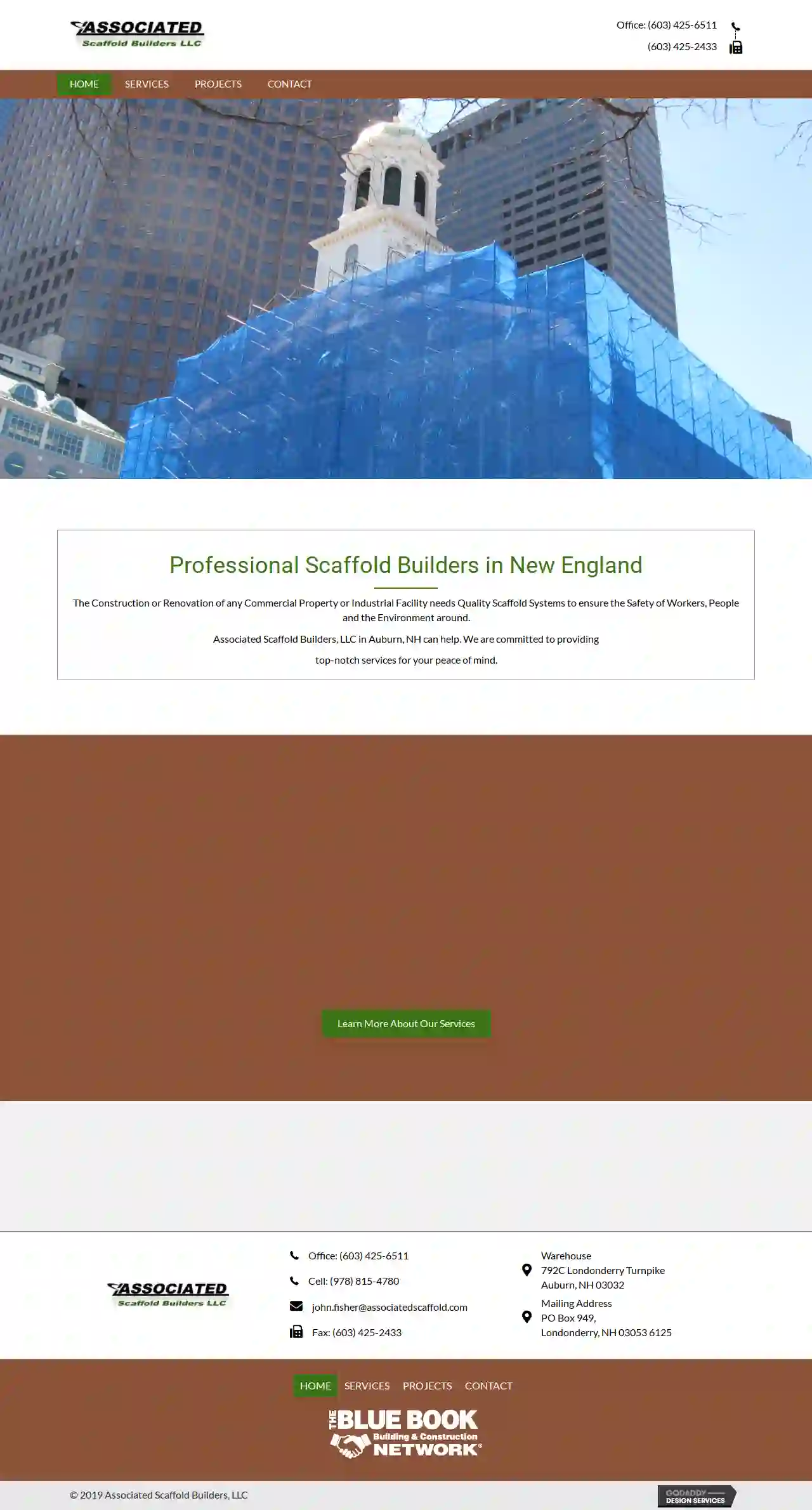
Associated Scaffold Builders, LLC
792C Londonderry Turnpike, Auburn, 03032, USAssociated Scaffold Builders, LLC Professional Scaffold Builders in New England The Construction or Renovation of any Commercial Property or Industrial Facility needs Quality Scaffold Systems to ensure the Safety of Workers, People and the Environment around.Associated Scaffold Builders, LLC in Auburn, NH can help. We are committed to providing top-notch services for your peace of mind. Mission Statement We provide our customers with safe, efficient, on time, on budget access solutions throughout New England. Associated Scaffold Builders, LLC provides customer satisfaction with preplanning, design, engineering, and estimating while utilizing and maintaining the best trained and skilled craftsmen. We accomplish this with our commitment to people, safety, integrity, and dedication. What Sets Us Apart Being in business for more than 30 years, we have proven our ability to deliver superior services to our commercial and industrial clients throughout New England. Our skilled, dedicated, and knowledgeable team always works with safety and integrity in mind.
- Services
- Why Us?
- Gallery
Get Quote
Bill's Equipment & Supply, Inc.
4.146 reviews1234 Main St, Colorado Springs, 80916, USAt Bill's Equipment & Supply, Inc., we've been adding value to your work since 1954. As a family-owned and operated business in the Pikes Peak region, we pride ourselves on providing expert advice, friendly service, and top-quality equipment rentals and sales. From aerial and high-reach equipment to generators and lights, we've got you covered. Our team is dedicated to helping you get the job done efficiently and effectively. Whether you're a contractor or homeowner, we're here to help you find the right equipment for your needs. With three locations to serve you, we're your one-stop shop for all your equipment needs. Trust us to provide you with the best equipment, customer service, and friendly staff. We're committed to helping you succeed, and we're proud to be a part of your project's success story.
- Services
- Why Us?
- Accreditations
- Our Team
- Testimonials
- Gallery
Get Quote
Austin Sales & Scaffold
4.649 reviewsAustin, Texas, USA, 7803 FM 969, 78724, USAustin Sales & Scaffold is a leading provider of scaffolding solutions, offering a wide range of products and services including System Scaffold, Frame & Brace, Shoring, Mod-U-Frame, Safety Training, and more. With a commitment to safety and quality, they cater to various industries such as construction, electric, maintenance, masonry, painting, steam cleaning, and sand blasting. Their team is dedicated to providing top-notch support and assistance for all scaffolding needs.
- Services
- Why Us?
- Accreditations
- Our Team
- Testimonials
- Gallery
Get Quote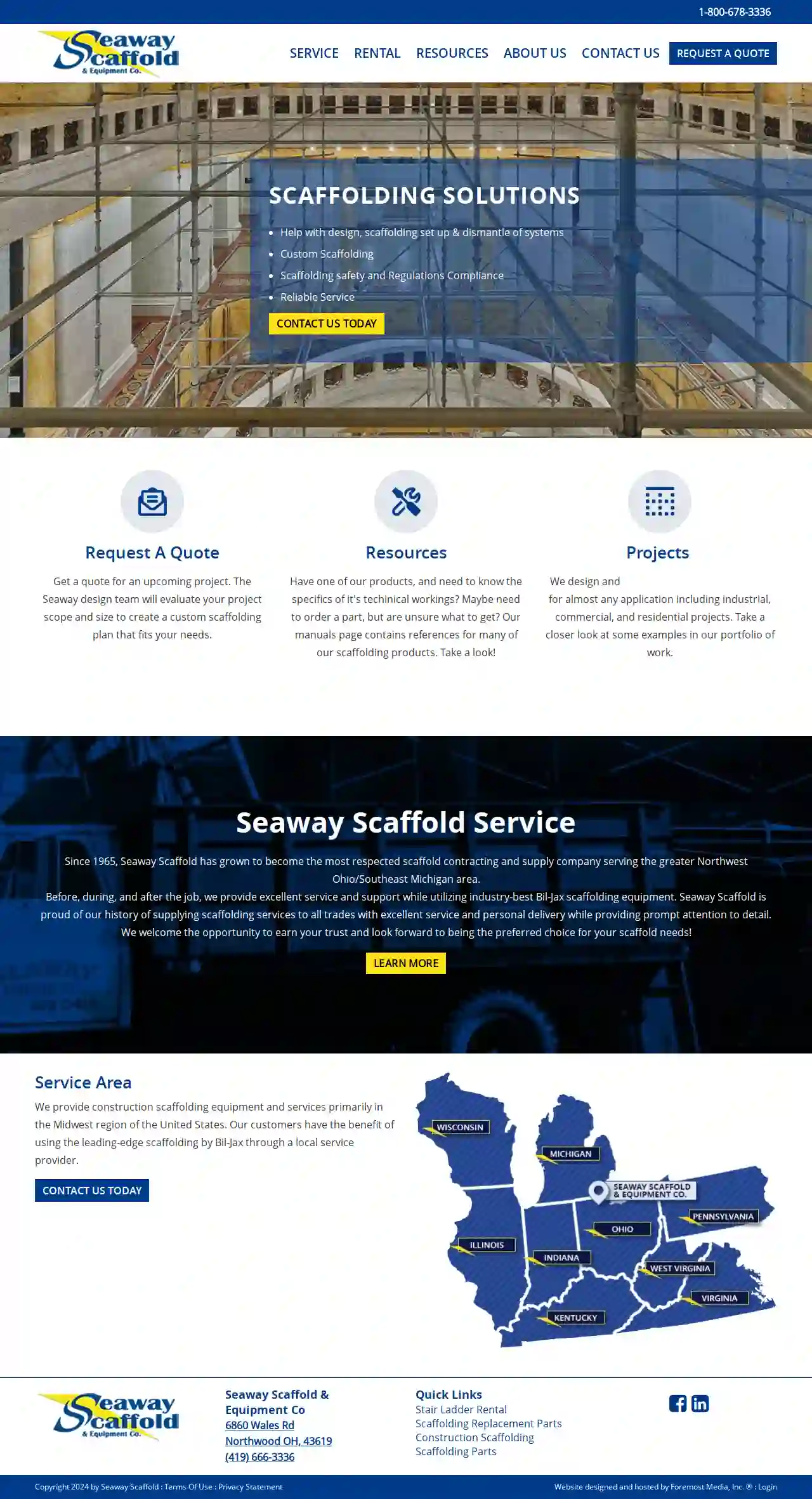
Seaway Scaffold & Equipment Co
4.534 reviews6860 Wales Rd, Northwood, 43619, USSeaway Scaffold & Equipment Co. has been the most respected scaffold contracting and supply company serving the greater Northwest Ohio/Southeast Michigan area since 1965. We provide excellent service and support before, during, and after the job, utilizing industry-best Bil-Jax scaffolding equipment. Our team designs and builds scaffold systems for almost any application, including industrial, commercial, and residential projects. At Seaway Scaffold, we are proud of our heritage and our affiliation with Bil-Jax, a manufacturing leader of scaffold products. We supply scaffolding services to all trades, with excellent service and personal delivery while providing prompt attention to detail. Our mission is to listen, effectively respond to your needs, and in turn translate those needs into safe solutions that work. We welcome the opportunity to earn your trust and look forward to being the preferred choice for your scaffold needs!
- Services
- Why Us?
- Accreditations
- Gallery
Get Quote
Springs Contractor Supply
123 Main St, Colorado Springs, 80909, USBill's Equipment & Supply, Inc. is a family-owned and operated business in the Pikes Peak region, providing equipment rental, sales, and service since 1954. They offer a wide variety of equipment for contractors and homeowners, with three locations to ensure convenient access. Their friendly, expert staff provides start-to-finish support, saving customers time and money. They also offer maintenance and repairs, with mobile or in-shop services available. Bill's Equipment & Supply has received numerous positive reviews for their exceptional customer service, competitive prices, and wide selection of equipment.
- Services
- Why Us?
- Accreditations
- Our Team
- Testimonials
- Gallery
Get Quote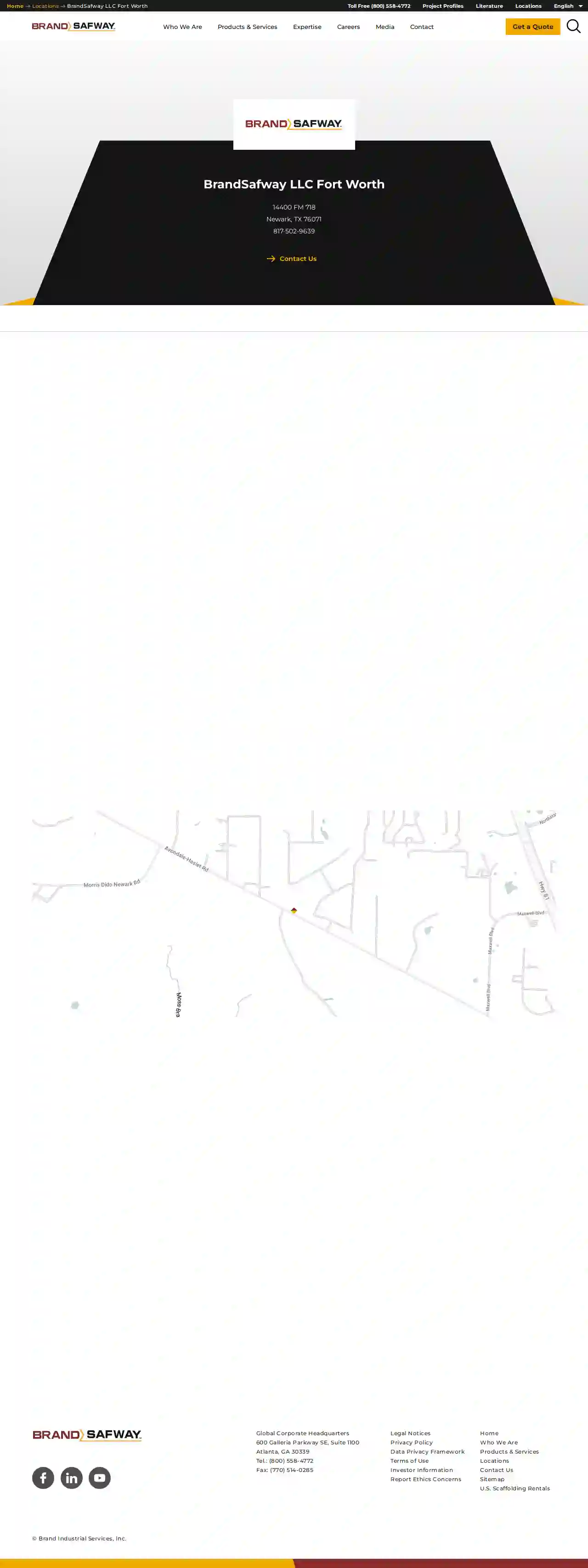
BrandSafway LLC Fort Worth
123 Industrial Blvd, Fort Worth, 76102, USBrandSafway is a leading provider of access solutions, including scaffolding, aerial work platforms, and forming and shoring equipment. With a strong commitment to safety, quality, and customer satisfaction, BrandSafway offers a wide range of services tailored to meet the unique needs of clients across various industries. Their team of experienced professionals is dedicated to delivering innovative solutions that enhance efficiency and productivity, ensuring successful project outcomes.
- Services
- Why Us?
- Accreditations
- Our Team
- Testimonials
Get Quote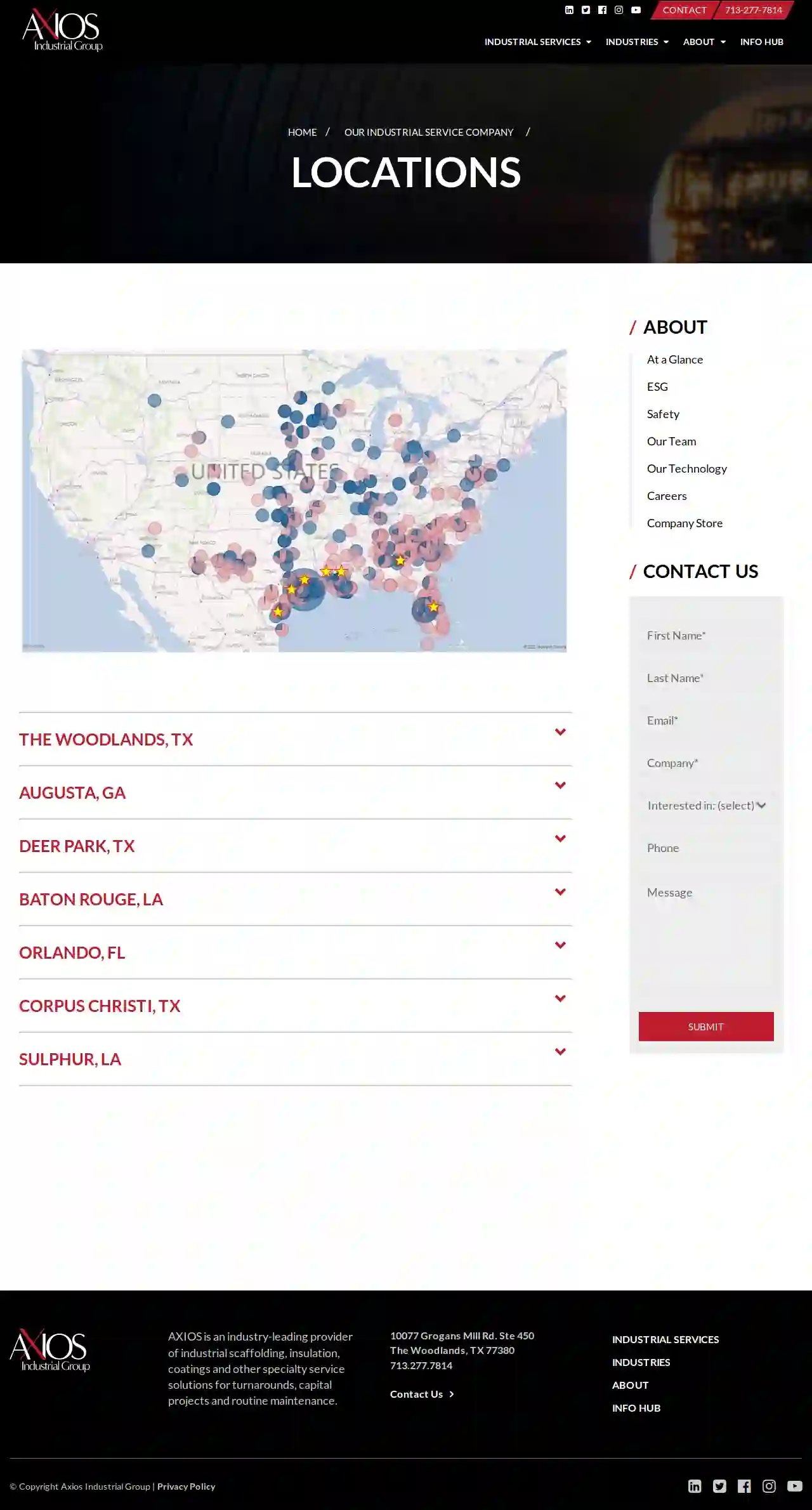
AXIOS Industrial Group
51 reviews8263 Florida Blvd, Denham Springs, 70726, USAXIOS Industrial is a dynamic industrial service company that provides scaffolding, insulation, coatings, and specialty services for turnarounds, capital projects, and routine maintenance. With a proven track record of safely delivering solutions, AXIOS combines unparalleled expertise with advanced technology to meet complex industrial needs.
- Services
- Why Us?
- Gallery
Get Quote
Integrity Scaffold Service Group
3.73 reviewsNot available, USAt Integrity Scaffold Service Group, we specialize in providing top-notch Building Maintenance Unit (BMU) services. Our team of experts has extensive experience in installing and maintaining permanent and temporary structures. With a strong commitment to quality and customer satisfaction, we strive to deliver exceptional results. Our services include BMU installation, maintenance, and repair, as well as permanent and temporary structure installation. We take pride in our work and ensure that every project is completed to the highest standards. Contact us today to learn more about our services and how we can help you achieve your goals.
- Services
- Why Us?
- Accreditations
- Gallery
Get Quote
BrandSafway LLC Corpus Christi
3.325 reviews1234 Access Road, Corpus Christi, 78401, USBrandSafway is a leading provider of access solutions, including scaffolding, aerial work platforms, and forming and shoring. With a strong commitment to safety, quality, and customer satisfaction, BrandSafway offers a wide range of services tailored to meet the unique needs of clients across various industries. Their team of experienced professionals is dedicated to delivering innovative solutions that enhance efficiency and productivity, ensuring successful project outcomes.
- Services
- Why Us?
- Accreditations
- Our Team
- Testimonials
Get Quote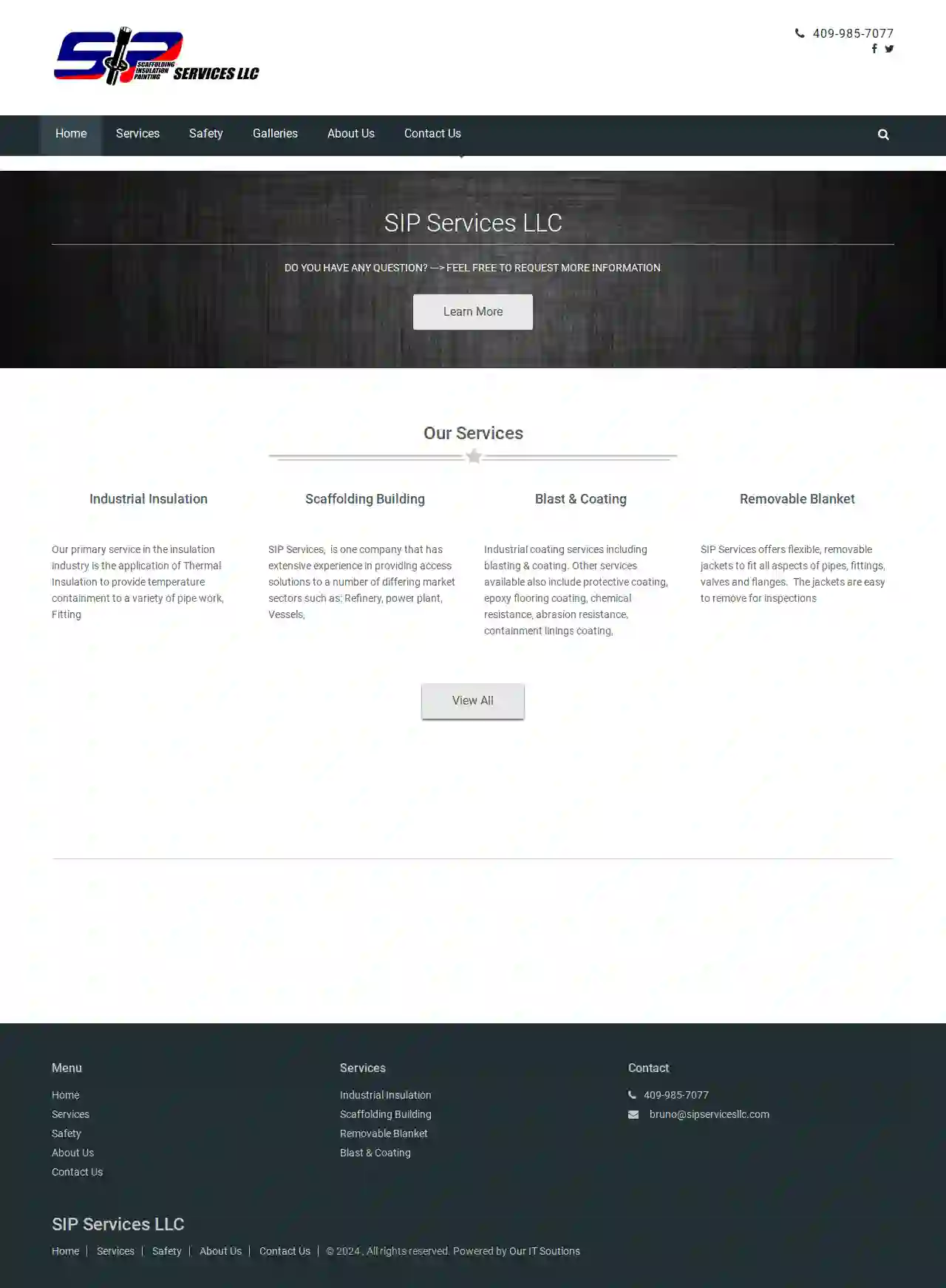
SIP Services LLC
58 reviews3049 Gulfway Drive, Port Arthur, Texas, 3049 Gulfway Drive Port Arthur, 77642, USSIP Services LLC. was formed in South East Texas, providing Thermal Insulation to the construction industry. SIP Services has continued to provide Thermal Insulation to refineries, power plants, gas plants etc. Also, we provide acoustic insulation, fire protection, scaffold buildings, removable blanket, asbestos removal, blasting & coating along with Trace Heating, around South East Texas and US completing projects. With our head office based in Port Arthur Texas, to cover the whole of the United States.
- Services
- Why Us?
- Accreditations
- Our Team
- Testimonials
- Gallery
Get Quote
Over 2,353+ Scaffolding Contractors registered
Our scaffolding pros operate in Edna & surroundings!
ScaffoldingHQ has curated and vetted the Best Scaffolding Companies in and around Edna. Find a trustworthy pro today.
Frequently Asked Questions About Scaffolding Companies
- Licensing and Insurance: Verify their licenses are current and that they have adequate insurance coverage.
- Experience: Choose a company with a history of successfully completing similar projects. Ask for references and check their portfolio.
- Safety Record: Inquire about their safety practices and accident history. A strong safety culture is essential.
- Professionalism: Observe their communication, responsiveness, and attention to detail. A reputable company will be organized and transparent.
- Reviews and Testimonials: Read online reviews and feedback from previous clients to assess their reputation.
- Industry Affiliations: Membership in professional organizations like the NASC (National Access & Scaffolding Confederation) indicates a commitment to industry standards.
- Online Directories: Use specialized directories like ScaffoldingHQ to search for scaffolding companies in your area.
- Search Engines: Use Google or other search engines to search for 'scaffolding companies near me' or 'scaffolding rental [your location]'.
- Local Construction Associations: Contact local construction associations for recommendations.
- Word-of-Mouth Referrals: Ask friends, family, or colleagues for recommendations based on their past experiences.
- Project Size and Complexity: The height, configuration, and accessibility of the scaffolding will influence the amount of materials and labor required.
- Scaffolding Type: Different scaffolding systems (tube and clamp, system scaffolding, suspended scaffolding) have varying costs.
- Duration of Rental: The length of time you need the scaffolding will affect the overall rental price.
- Location: Labor costs and material availability can differ based on your location.
- Additional Services: Some companies may offer additional services like erection, dismantling, or transportation, which can add to the cost.
- Steel: The most common material due to its strength, durability, and resistance to corrosion.
- Aluminum: Lighter than steel, often used for smaller projects or where weight is a concern.
- Timber: Used for decking platforms and some traditional scaffolding structures. It's less common now due to its susceptibility to rot and damage.
- Fiberglass: Used in specialized applications where electrical conductivity is a concern.
How do I know if a scaffolding company is reputable?
How can I find scaffolding companies near me?
How much does scaffolding cost to rent in the USA?
What are some common materials used in scaffolding?
How do I know if a scaffolding company is reputable?
- Licensing and Insurance: Verify their licenses are current and that they have adequate insurance coverage.
- Experience: Choose a company with a history of successfully completing similar projects. Ask for references and check their portfolio.
- Safety Record: Inquire about their safety practices and accident history. A strong safety culture is essential.
- Professionalism: Observe their communication, responsiveness, and attention to detail. A reputable company will be organized and transparent.
- Reviews and Testimonials: Read online reviews and feedback from previous clients to assess their reputation.
- Industry Affiliations: Membership in professional organizations like the NASC (National Access & Scaffolding Confederation) indicates a commitment to industry standards.
How can I find scaffolding companies near me?
- Online Directories: Use specialized directories like ScaffoldingHQ to search for scaffolding companies in your area.
- Search Engines: Use Google or other search engines to search for 'scaffolding companies near me' or 'scaffolding rental [your location]'.
- Local Construction Associations: Contact local construction associations for recommendations.
- Word-of-Mouth Referrals: Ask friends, family, or colleagues for recommendations based on their past experiences.
How much does scaffolding cost to rent in the USA?
- Project Size and Complexity: The height, configuration, and accessibility of the scaffolding will influence the amount of materials and labor required.
- Scaffolding Type: Different scaffolding systems (tube and clamp, system scaffolding, suspended scaffolding) have varying costs.
- Duration of Rental: The length of time you need the scaffolding will affect the overall rental price.
- Location: Labor costs and material availability can differ based on your location.
- Additional Services: Some companies may offer additional services like erection, dismantling, or transportation, which can add to the cost.
What are some common materials used in scaffolding?
- Steel: The most common material due to its strength, durability, and resistance to corrosion.
- Aluminum: Lighter than steel, often used for smaller projects or where weight is a concern.
- Timber: Used for decking platforms and some traditional scaffolding structures. It's less common now due to its susceptibility to rot and damage.
- Fiberglass: Used in specialized applications where electrical conductivity is a concern.